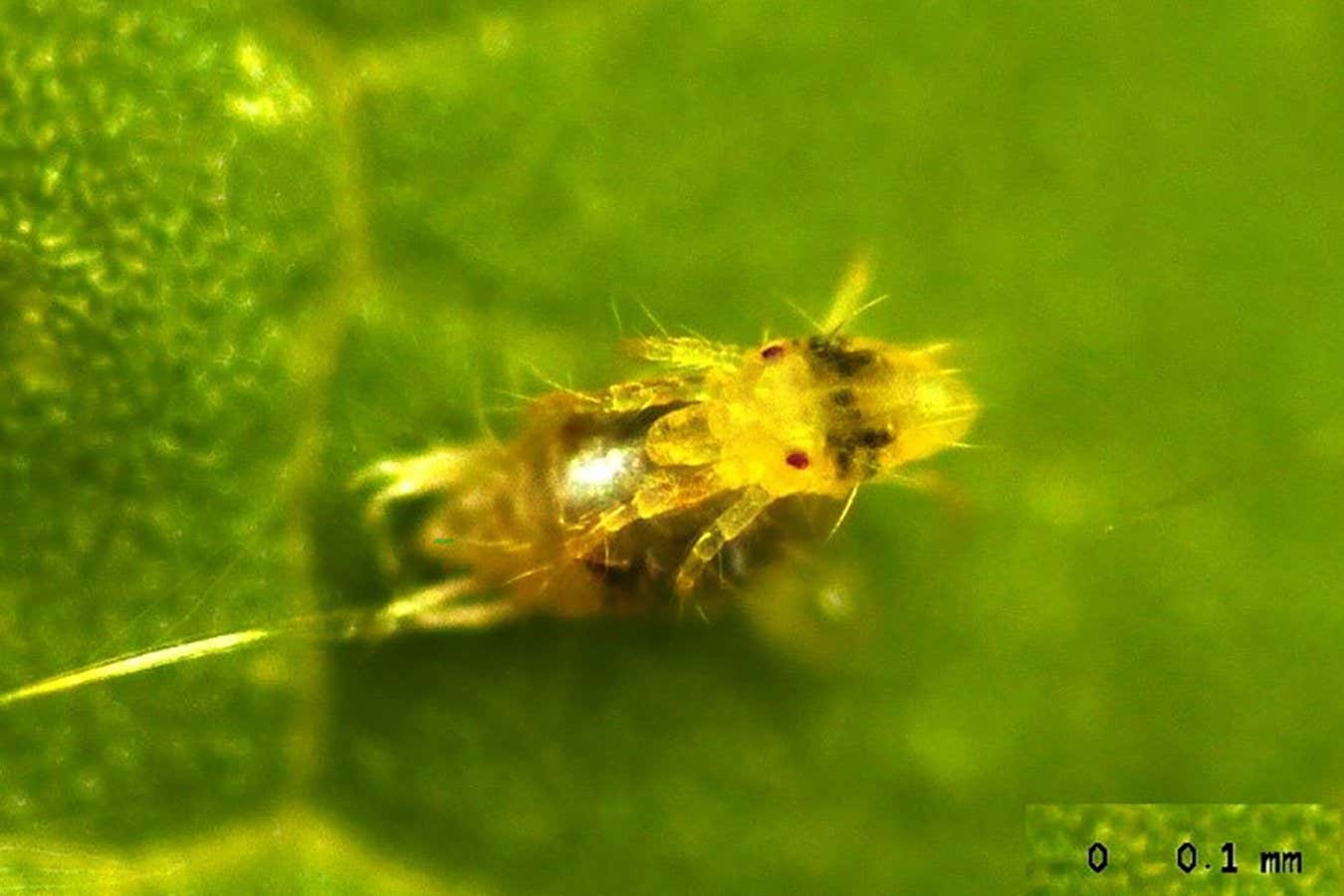A male spider mite guarding a female
Peter Schausberger, University of Vienna
Male spider mites exhibit a unique behavior of removing the outer skin of juvenile females in order to secure priority in mating with them.
These mites, specifically the two-spotted spider mite (Tetranychus urticae), are a common agricultural pest that feeds on various crops like beans and tomatoes. As they transition from juvenile nymphs to adults, they undergo moulting, shedding their outer skin.
Adult females of the species can mate with multiple partners, but only the sperm from their first partner fertilizes their eggs. Consequently, there is fierce competition among males for recently matured females.
Male mites often guard juvenile females until they reach reproductive maturity in an attempt to secure mating opportunities. However, this strategy is risky, as it requires energy and prevents males from finding food. Furthermore, other males may still succeed in stealing the females at the last moment.
Researchers, led by Peter Schausberger from the University of Vienna in Austria, discovered that male guards minimize this risk by forcefully removing the females’ outer skin just before they reach sexual maturity. This enables them to inseminate the females before other males can intervene.
The researchers conducted experiments where they filmed juvenile female spider mites that were raised individually in cages, both with and without the presence of a male.
The females housed alone naturally shed their outer skin at a relaxed pace upon reaching sexual maturity.
In contrast, females living with a male had their outer skin forcefully removed. The male would drum on the female’s skin as she approached maturity to encourage it to break open. Subsequently, the male would use his mouthparts to strip off the female’s skin from behind, exposing her genitals for immediate insemination.
As a result of this behavior, females living with a male emerged from their outer skin an average of 5 minutes earlier than those without a male present, according to Schausberger.
“Five minutes may seem short, but in relative time, it is significant because spider mites often inhabit densely populated colonies where other males are nearby,” says Schausberger. “Every second counts when it comes to being the first to mate with the emerging female.”
This skin-stripping behavior observed in spider mites is the first of its kind to be documented through experimental evidence.
Insights:
- Male spider mites remove the outer skin of juvenile females to gain mating priority.
- This behavior is observed in the two-spotted spider mite species.
- Adult females can mate with multiple partners, but only the first partner’s sperm fertilizes their eggs.
- Males guard juvenile females to secure mating opportunities, despite the risks involved.
- Male spider mites forcibly remove females’ outer skin just before they reach sexual maturity.
- This behavior allows males to inseminate females before other males can interfere.
- The skin-stripping process enables females to emerge from their outer skin earlier, giving males a competitive advantage.
- Spider mites often live in high-density colonies, intensifying the competition for mating.
- This behavior has only been experimentally documented in spider mites.








